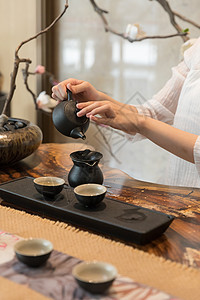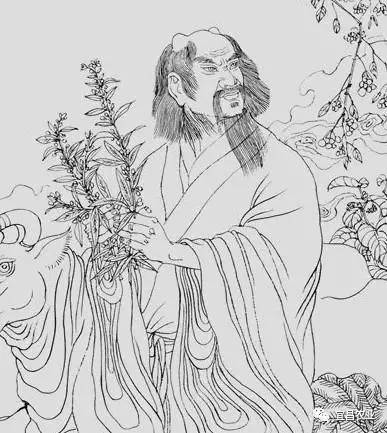发布日期:2024-03-20 11:34
茶文化的起源可以追溯到中国古代,经过了长期的发展和演变,逐渐形成了今天丰富多彩的茶文化。
茶的起源:
- 神农时期:唐·陆羽《茶经》:“茶之为饮,发乎神农氏。”在中国的文化发展史上,往往是把一切与农业、与植物相关的事物起源最终都归结于神农氏。也正因为如此,神农才成为农之神。
- 西周时期:晋·常璩的《华阳国志·巴志》:“周武王伐纣,实得巴蜀之师,茶蜜皆纳贡之。”这一记载表明在周朝的武王伐纣时,巴国就已经以茶与其他珍贵产品纳贡与周武王了。《华阳国志》中还记载,那时已经有了人工栽培的茶园。
- 秦汉时期:西汉王褒《僮约》:“烹荼尽具”,“武阳买荼”,经考该荼即今茶。长沙马王堆西汉墓中,发现陪葬清册中有"槚一笥"和“槚一笥"竹简文和木刻文,经查证"槚"即"茶"的异体字,说明当时湖南饮茶颇广。
茶的发展:
- 唐代:隋唐时,茶叶多加工成饼茶。饮用时,加调味品烹煮汤饮。随着茶事的兴旺和贡茶的出现,加速了茶叶栽培和加工技术的发展,涌现出了许多名茶,品饮之法也有较大改进。为改善茶叶苦涩味,开始加入薄荷、盐、红枣调味。此外,开始使用专门的烹茶器具,饮茶的方式也发生了显著变化,由之前的粗放式转为细煎慢品式。
- 宋代:茶区继续扩大,种茶、制茶、点茶技艺精进。宋代茶文化发达,出现一批茶学著作,如蔡襄《茶录》、宋子安《东溪试茶录》
茶文化的核心价值是“和”,即和谐、和平、和睦。茶文化强调人与人、人与自然、人与社会的和谐,倡导以茶会友、以茶敬客、以茶养性、以茶育人。在中国,茶文化已经成为人们日常生活的一部分,人们在品茶中享受生活、品味人生。
茶文化:
茶文化是指与茶相关的文化,包括茶艺、茶道、茶文学、茶具、茶馆等。它是中国传统文化的重要组成部分,也是世界文化的瑰宝之一。茶文化起源于中国,传播到世界各地,对人类文明产生了深远的影响。

茶文化还包括茶艺和茶道。茶艺是指泡茶、品茶的技巧和艺术,包括选茶、择水、备具、冲泡、品尝等环节。茶道是指饮茶过程中的精神追求和思想内涵,包括茶德、茶精神、茶理、茶情等。茶艺和茶道是茶文化的重要组成部分,它们共同体现了茶文化的核心价值。
此外,茶文化还包括茶文学、茶具、茶馆等方面。茶文学是指以茶为题材的文学作品,包括诗词、散文、小说等。茶具是指泡茶、品茶所用的器具,包括茶壶、茶杯、茶碗、茶盘等。茶馆是指提供茶水和茶文化体验的场所,是茶文化的重要载体。
总的来说,茶文化是一种丰富多彩的文化,它涵盖了多个方面,包括茶艺、茶道、茶文学、茶具、茶馆等。它不仅是中国传统文化的重要组成部分,也是世界文化的瑰宝之一。
The origin of tea can be traced back to ancient China. While the exact time and place of its discovery are not precisely known, there are various legends and historical records associated with it.
One popular legend suggests that tea was discovered by Shen Nong, an ancient Chinese emperor and deity, during his travels. According to the legend, Shen Nong accidentally tasted a bitter plant and found that it had a refreshing and invigorating effect. This plant is believed to be the earliest form of tea.
Historically, tea cultivation and consumption began to thrive in China several thousand years ago. It gradually spread to other parts of the world through trade and cultural exchanges. Over time, different regions developed their own unique tea cultures, processing methods, and tea varieties.
Tea has become an important beverage globally, with various types and flavors. It is not only enjoyed for its taste but also for its potential health benefits, such as providing antioxidants and promoting relaxation. The cultural and social aspects of tea, including tea ceremonies and the art of tea appreciation, further contribute to its significance in many societies.
Understanding the origin of tea provides insight into its long history and the diverse ways it has become an integral part of human civilization. Whether as a daily drink or a cultural tradition, tea continues to play a significant role in many people's lives.
Tea culture encompasses the various aspects related to the consumption, preparation, and appreciation of tea. It includes the following elements:
1. Tea varieties and blends: Different types of tea, such as green tea, black tea, oolong tea, and white tea, each have their unique characteristics, flavors, and brewing methods. Additionally, there are countless blends and special blends that showcase the creativity and diversity of tea.
2. Tea ceremonies and rituals: In some cultures, tea is associated with specific ceremonies and rituals. These may involve meticulous preparation, utensils, and a set sequence of actions, often with a focus on mindfulness and simplicity.
3. Tea tasting and appreciation: Developing the skill of tasting and appreciating tea involves noting the aroma, flavor, mouthfeel, and aftertaste. It allows for a deeper connection with the tea and an enhanced sensory experience.
4. Tea utensils: A wide range of utensils are used in tea culture, including teapots, cups, strainers, and tea trays. These utensils can be crafted from various materials and may hold significance in the tea-drinking process.
5. Tea and health benefits: Tea is often associated with potential health benefits, such as containing antioxidants, promoting relaxation, and aiding in digestion. This aspect adds to its appeal and value.
6. Tea houses and tea rooms: These are dedicated spaces where people gather to enjoy tea, often providing a serene and communal atmosphere.
7. Cultural traditions and ceremonies: Tea plays a role in many cultural traditions and ceremonies, such as weddings, special occasions, or as a gesture of hospitality.
8. Art and literature: Tea has inspired numerous works of art, including paintings, poetry, and literature, reflecting its cultural and aesthetic significance.
9. Sharing and community: Tea is often shared among friends, family, or in social settings, facilitating connections and conversations.
10. Mindfulness and meditation: In some contexts, tea drinking is seen as a meditative practice, promoting present-moment awareness and a sense of calm.
Tea culture varies across different regions and countries, each with its own unique traditions, ceremonies, and preferences. Exploring and engaging with tea culture can offer a deeper appreciation for this beverage and its role in different societies. It provides an opportunity to savor the ritual, connect with others, and enjoy the numerous benefits that tea has to offer.



